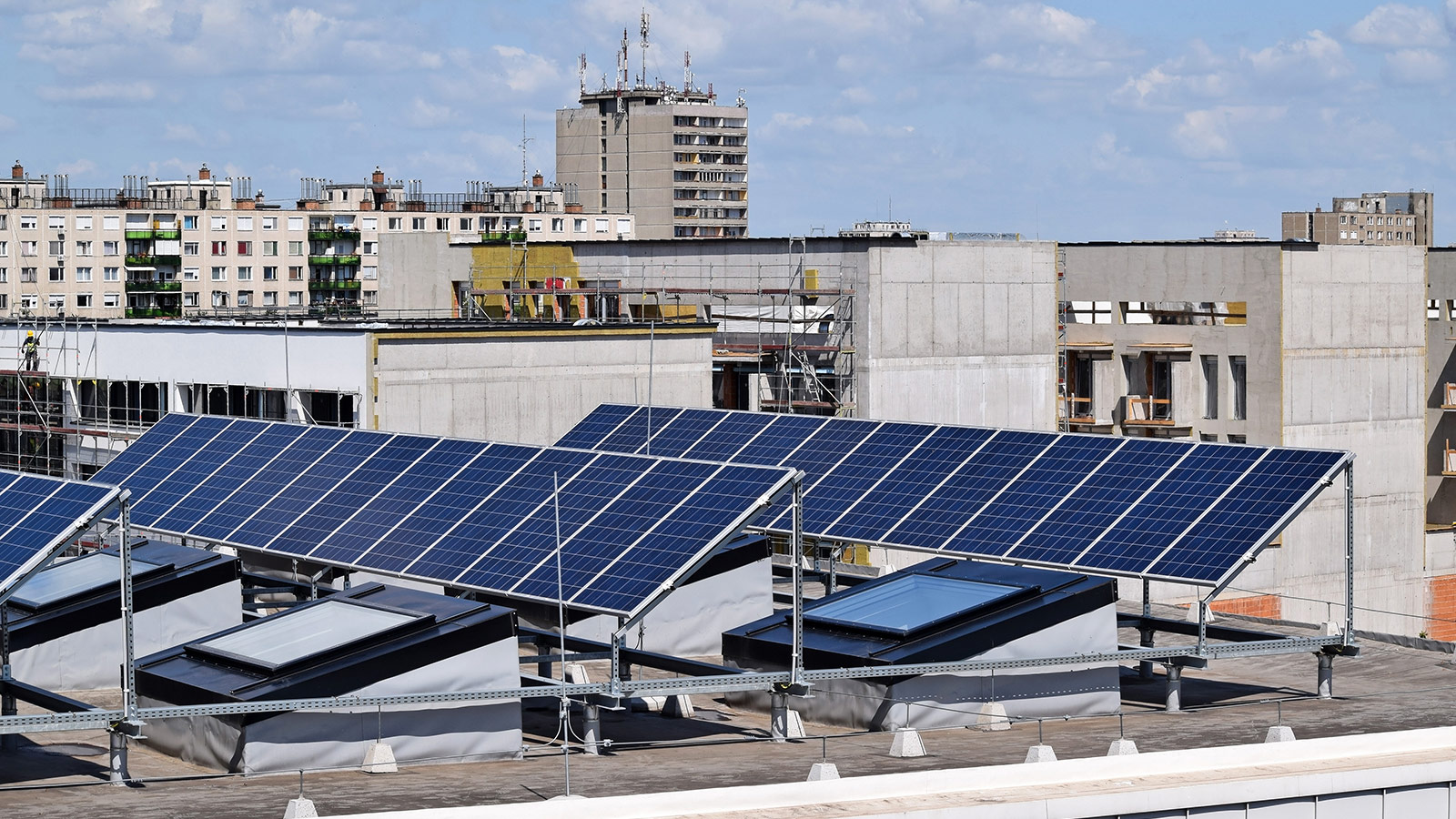When you think of residential solar power, you might envision an upscale home in Marin County, or a compound in rural Idaho. You probably don’t think of low-income apartment buildings in the outer boroughs of New York City. But that’s exactly where new solar technologies can do the most good.
Remember Superstorm Sandy? Three years ago, when Sandy slammed New York, thousands of low-income apartment-dwellers found themselves in high-rise hell. Many lost power and heat — in some cases, for weeks or months. Lacking functional elevators, the elderly and disabled were stranded without food, water, and medicine.
Solar power with battery backup storage systems (solar + storage) would have been a lifeline in that crisis — and it could prevent the next one. That’s the conclusion of a new report by the Clean Energy Group, a national nonprofit that works to increase access to clean energy technologies.
The report, “Resilience for Free: How Solar + Storage Could Protect Multifamily Affordable Housing from Power Outages at Little or No Net Cost,” looked at data for buildings in New York, Chicago, and Washington, D.C. to examine the financial case for installing solar + storage systems in multifamily affordable housing. It found that — given the plummeting cost of solar power and the introduction of game-changing backup batteries — the time is now for solar + storage in affordable housing.
“This analysis shows us something we didn’t expect — these new resilient power technologies can make economic sense for building owners to install now, not years from now,” said coauthor Lewis Milford, president of the Clean Energy Group and a senior fellow at the Brookings Institution.
Milford and his colleagues ran the numbers and determined that solar + storage can reduce operating costs in affordable housing, and even generate revenue where markets permit. And, with payback periods as short as a few years, solar + storage can be implemented at no net cost over the lifetime of a project. You got that right: It’s basically free.
For those who live in, own, or manage affordable housing, the potential benefits are substantial. Solar + storage can provide crisis-proof power for essential services like water booster pumps (so people on upper floors can drink and flush), lighting, fire alarms, elevators, and heating and cooling. That can allow people to “shelter in place” during an emergency — reducing the human and financial costs of a disaster. And (bonus!) by reducing carbon emissions, solar power helps mitigate climate change, reducing the likelihood of future climate disasters.
Crucially, solar + storage can increase the resilience of those most at risk. Low-income, vulnerable populations — those requiring supportive services — have the most to lose in a disaster: They often lack the income, savings, insurance, and access to information needed to recover from the adverse impacts of disruptive weather events. These vulnerable residents have the most to gain, then, from technologies that can keep them in their homes with the lights on.
And yet, to date, “big solar” companies like SolarCity and Tesla have focused primarily on large-scale, private, commercial customers who want to reduce their utility bills. The challenge now is to make sure that the huge benefits of solar with battery storage flow where they are needed most.
“Policymakers should implement more targeted incentive programs to encourage solar + storage deployment in low-income communities now, so we don’t wait another decade for the benefits of these technologies to trickle down to the those in need, as happened with stand-alone solar,” said Seth Mullendore, a project manager at Clean Energy Group and coauthor of the report.
As the authors of “Resilience for Free” conclude, “There is now no economic or technical excuse to leave low-income and vulnerable people at risk.”
——
Laurie Mazur is the editor for the Kresge Foundation/Island Press Urban Resilience Project, which is working to advance a holistic, transformative approach to urban resilience in the era of climate change, grounded in a commitment to sustainability and equity.



